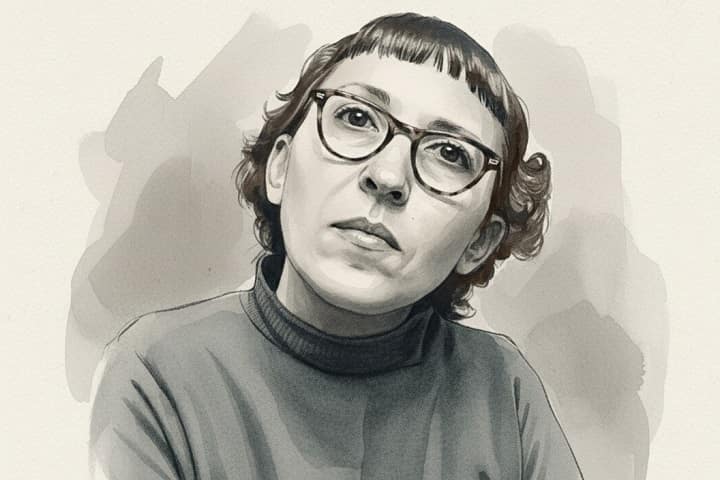A name whispered in true crime circles, shrouded in mystery: Adeline Watkins. Some say she was the only woman who ever reached Ed Gein’s reclusive heart; others claim she was simply a ghost born from rumor and fear. To understand the full scope of Ed Gein’s relationships with women, including both documented and folkloric figures, see our detailed exploration in Ed Gein and the Women in His Life.
In the quiet farmlands of 1950s Plainfield, Wisconsin, her story or legend lingers in the shadows of one of America’s most infamous criminals. Who was Adeline Watkins, and what role did she really play in the life of the man behind the horror?
Augusta Gein: Mother, Mentor, and Tyrant
No discussion of Ed Gein’s relationship with women is complete without Augusta, his mother. Augusta Gein was a deeply religious, controlling figure who instilled in Ed the belief that all women, aside from herself, were sinful and dangerous.
Augusta’s domineering personality shaped Ed’s psyche profoundly. She discouraged friendships with peers and romantic relationships, leaving Ed socially isolated. After she died in 1945, Ed’s grief and internalized beliefs about women intensified. This unresolved tension would echo throughout his interactions with any woman who crossed his path.
Local Women in Plainfield: Brief Encounters
After Augusta’s death, Ed Gein remained mostly isolated, but he occasionally interacted with women in Plainfield — through taverns, local errands, and community events. Neighbors remembered him as polite but socially awkward.
Some accounts, though unverified, claim that Ed had brief connections with women like Adeline Watkins, who allegedly dated him for a short time. While her story remains largely folklore, it highlights a recurring theme: Ed’s relationships with women were fleeting, misunderstood, and surrounded by local gossip.
The Mythical Figure of Adeline Watkins
Adeline Watkins serves as a symbolic figure in the Gein narrative. While historical verification is scarce, her story represents one of the few glimpses into Ed’s longing for normal human companionship.
In newspaper accounts and later true crime retellings, Adeline is portrayed as kind, cautious, and perhaps one of the few people who treated Ed with empathy. Historians caution that much of her narrative could be exaggerated or fictionalized, reflecting local fascination with the “human side” of a criminal.
Women as Mirrors of Obsession
Gein’s fascination with women extended beyond everyday interactions. He exhumed bodies from graves, creating masks, corsets, and other artifacts from human skin — a macabre attempt to “possess” femininity in a literal and psychological sense.
Some true crime experts suggest that these acts were fueled by grief and fear of women outside Augusta’s control. In this light, women like Adeline Watkins — real or mythologized — represent both a longing for intimacy and a mirror for the disturbing extremes of obsession.
The Legacy of Female Influence
Examining Ed Gein through the lens of the women in his life provides more than a sensational tale; it reveals the social and psychological pressures that can distort human behavior.
Augusta Gein’s control, combined with the sparse and cautious interactions Ed had with local women, created a toxic environment where isolation, repression, and morbid curiosity flourished. Figures like Adeline Watkins, even if partly mythical, highlight the few glimpses of normalcy he may have yearned for — glimpses that were ultimately unattainable.
Frequently Asked Questions About Ed Gein and Women in His Life
Who were the women in Ed Gein’s life?
The most documented influence was his mother, Augusta. Other women, like Adeline Watkins, remain mostly anecdotal or folkloric.
Did Ed Gein have romantic relationships?
Evidence suggests his relationships were brief, minimal, and largely speculative. No verified long-term romance exists.
Why is Adeline Watkins often mentioned?
She represents the “human side” of Gein — the idea that he may have sought companionship, highlighting the contrast between his obsessions and social isolation.
How did Augusta Gein influence Ed’s crimes?
Her control and moral strictness instilled fear, shame, and obsessive tendencies toward women, which later manifested in his criminal behavior.
What can we learn from the women in Gein’s life?
Their stories — both real and mythologized — help researchers and readers understand the psychological roots of his obsession, isolation, and eventual crimes.
Conclusion: Understanding the Shadow of Women in Gein’s Life
The women surrounding Ed Gein, from his domineering mother to elusive figures like Adeline Watkins, shaped his psychology in profound ways. They reveal the tension between humanity and monstrosity, intimacy and isolation.

